Upper Chesapeake Bay Fishing Report, 11/30/2018 Update:
Thanksgiving leftovers are still lingering around the house, and although generally speaking fishing has been somewhere between tough and very tough, some rockfish are still lingering around as well. Let's dive in and see where they’ve been hiding out this week: The majority of the schoolie stripers have been caught on the troll, which lines up very consistently with how the fishing has been going this fall. Schools of bait continue to hover around the middle of the water column in 30 feet of water, so expect the rockfish to be close by as well as below the bait balls. Trolling natural colored umbrella rigs and tandem rigs with skirts has been popular. The ol’ bottom-bouncing bucktail method has been going strong when opting for deeper waters, but that isn’t the only place the fish have been. Channel ledges with drop offs are going to be another good starting point. The mouth of the Patapsco, as well as Swan Point, have been mentioned as areas producing some success.
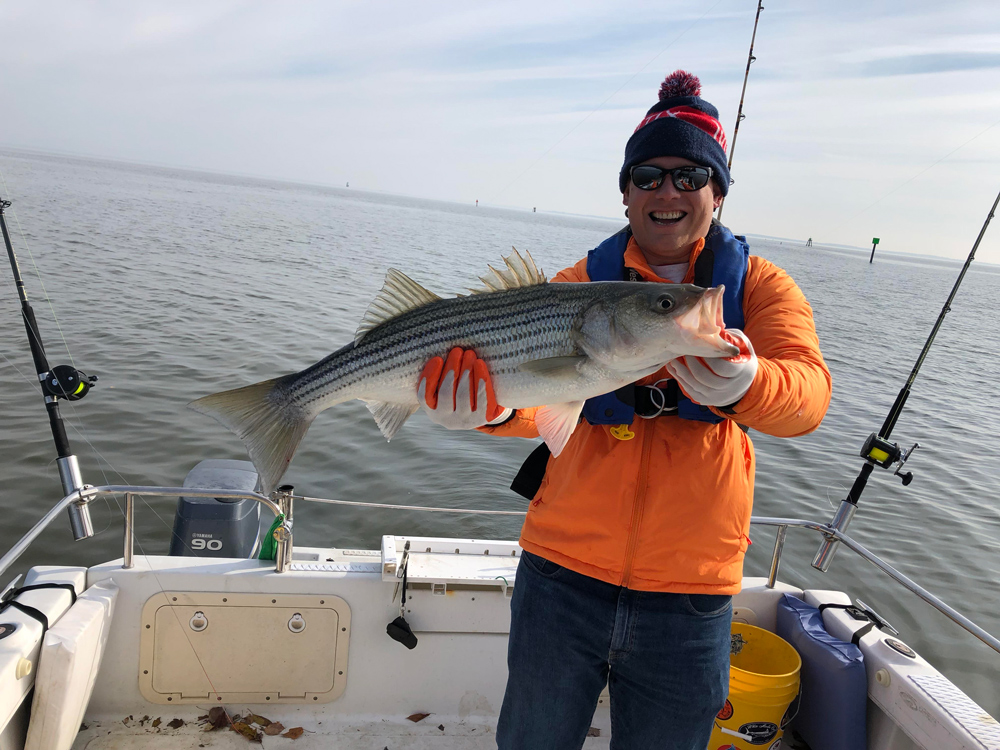
Jigging is having its usual go at the fish, where applicable. A hungry striper is going to engulf a six-inch jig, you’ve just got to find them first. The Bay Bridge pilings have been the most reliable destination right now due to its permanent gravity it has on fish, with natural colors like alewife and black-fleck good at the moment, during a moving tide. Live-lining eels has also been working to a degree if plastic isn’t your thing.
Another byproduct of the Bay Bridge is that it’s a haven for the white perch, too. Now that they’ve mostly departed the rivers and moved deep, this spot should remain a hot one for whites for the foreseeable future. Tiny bottom rigs with bloodworms or razor clam bits will certainly put the hurt down on the perch. If bait gets tough to come by, try jigging tandem rigs with a heavy jigging spoon on the bottom and a dropper with a two-inch tube or a streamer. Some sizeable perch seem to prefer the rock piles in specific, so be sure to check those out.
Upper Chesapeake Bay Fishing Report, 11/22/2018 Update:
Happy Thanksgiving, anglers! The striper season is nearing its end, and we can’t believe it either. As the rockfish begin to contract lockjaw and fade out of view, anglers have found it increasingly harder to find and hook up with the fish. But as some start winterizing boats and stowing tackle in the garage, there may be a few days left before the end of the fishing season. If you want the best shot at the fish recently, then trolling is the way to go. I bet you’re tired of reading about the umbrella rigs, and the bucktails, and the shads. But I’m sorry, you’re going to hear about it one more time. Chartreuse umbrella rigs are still picking away at the fish that are in the middle of the water column, with a majority of the schoolies preferring to suspend around 20 to 30 foot depths. Fish that are on the bottom will probably be the biggest, but toughest to get to bite. Bouncing large white bucktails (dress them with a yellow or chartreuse twister tail) along bottom can help trigger a strike. The channel edges outside of the Chester have been a good place to start.
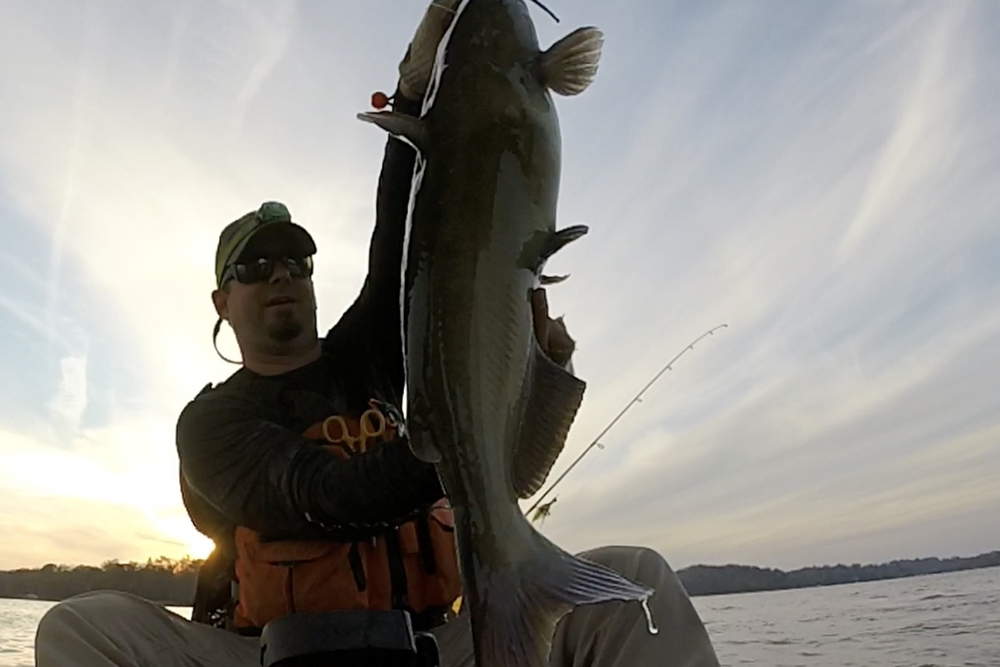
Bait anglers will find that the catfish are still around in both rivers and the Bay. Though fewer are being reported as hardly anyone’s chumming any more, these fish just never seem to leave and can still be caught if targeted.
Light tackle has been trickier, but the Bay Bridge has still been triggering a strike or three for those slinging soft-plastics and jigs, and allowing them to sink deep before beginning the retrieve. Even pulling large swimbaits have been getting a few bites here and there and Egret tails in the five-inch range in white or chartreuse have been good options. Perch are mixed in as well, so vertical jigging has an upper hand when it comes to multi-species fishing trips. Try jigging tandems with a one to three ounce jigging spoon on the bottom, a two foot leader, and a two inch tube jig, twister tail, or streamer for the dropper. Note that the white perch seem to have pushed out of the rivers for the most part, so the bite for them in stand-by deep water locations like the Bridge rockpiles should just get better and better as the weather grows colder and colder.
Upper Chesapeake Bay Fishing Report, 11/16/2018 Update:
The report for the Upper Bay has barely gone through any sort of change since last week, but with the upcoming rain and horrid weather, we can expect we’re going to see the fish continue acting rather funny. Trolling has become one of the best ways to cover water when you’re not sure of where the fish are. Even when there is no discernable structure around, any spot with marks on the finder will probably get you a few fish depending on how your spread is set up. Limetreuse and chartreuse shads (six-inchers are the standard) on umbrella rigs have been providing some good catches throughout the day. Skipping white bucktails off the bottom of the Bay will allow you chance to dredge up a higher proportion of keepers. The channel edges along the deeper side of the Western Shore and along the mouth of the Patapsco have been the most popular areas. Try dragging your spread around Love Point, Podickory, and Swan Point as well, and use your depth finder to dial into the hotspot range in 35 to 60 foot depths.
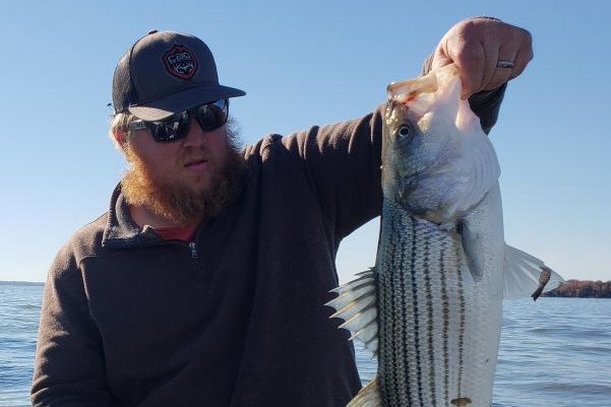
Vertical jigging has become decent recently with all of the fish moving towards the bottom of the water column. While they’re down there, it’s common to find suspended fish hovering just 10 or less above the bottom, leading to some fun vertical bites going on. If you can get your hands on the elusive Blue Blue vertical jig, tie one on and let ‘er sink. The stripers have been going nuts with that thing recently. G-Eye jigging spoons have also been a good bet.
The white perch are alive and well, but do seem to have pushed out of the rivers to some degree with most being caught in deep sections of the Bay. The perch are mixed in with the rockfish schools on bottom in some areas, so go after them with small tandem and bottom rigs. Bloodworms are working great for the perch as well if artificials don’t seem to be putting a dent in them. On a side note, the channel catfish just won’t leave. Chumming them up and hooking them on cut bait on the bottom will be your best bet at laying into these oddballs. At the rate we’re going in, you might be hooking these guys until Christmas, sheesh!
Upper Chesapeake Bay Fishing Report, 11/9/2018 Update:
We’ve got a bit of change in the fishing patterns this week, people. The fish have been feeling the change in weather just as much as we have, and it’ll call for some changes to your tackle set up for the upcoming week. Let’s hop right into it: Trolling has become one of the best ways to cover water and try some prospecting. Even when there is no discernable structure around, any spot with marks on the finder will probably get you a few fish depending on how your spread is set up. Limetreuse and chartreuse shads (six-inchers are the standard) on the regular umbrella rigs have been providing some catches throughout the day, but most have been throw-backs. Skipping white bucktails off the bottom will allow you chance to dredge up some nicer fish, which seem to now often be found holding deeper. The channel edges around Love Point, Podickory, and Swan Point as well have been the best areas, and use your depth finder to dial into the hotspot range of 35 to 60 feet of water.
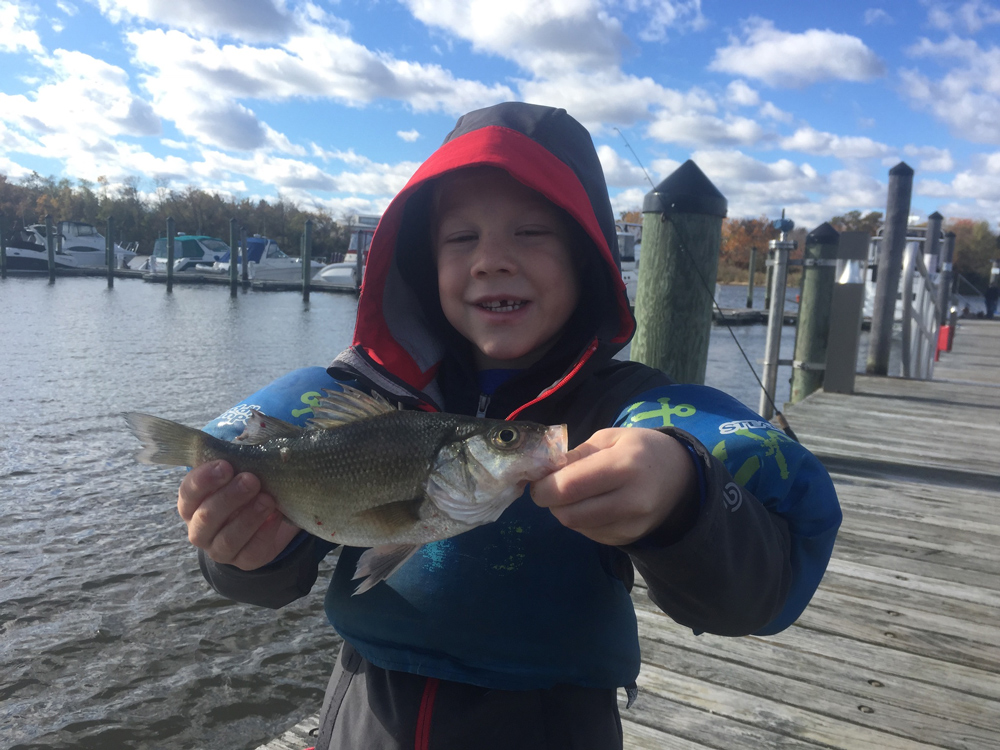
If you’re looking for light tackle action, jigging the Chesapeake Bay Bridge pilings and rock piles deserves some attention when you’re looking for suspended fish. Jigging around the Sewer Pipe with large plastic tails has swept up a few stripers in the area too, usually hanging just off the bottom. Lower sections of tributaries and near Pooles Island has been good for light tackle, too. We had some reader reports of nice stripers coming from up-river areas including in the Chester and the Magothy. While casting for these individuals as opposed to looking for open-water schools may lead to lower overall numbers, it does seem to be providing a better ratio of keeper fish at the moment.
The white perch are alive and well, with most being caught in deep holes and sections of the tributaries and the Bay. The perch are sometimes mixed in well with small rockfish, so go after them with small tandem and bottom rigs. Bloodworms and grass shrimp are working great for the perch, if artificials don’t seem to be putting a dent in them. On a side note, the channel catfish just won’t disappear. While their numbers do seem to have dwindled somewhat in open areas of the Bay at the rate we’re going in, you might be hooking these guys until Christmas… sheesh.
While this weekend may yet again bring about some iffy weather, expect the fishing to stay more or less the same, as schools of baitfish will still be making their way out of the tidal rivers for the stripers to pick off before committing to their migration pattern. Many anglers have opted to stay with their trolling gear recently, since it has been working for the past few weeks. Umbrella rigs are your best friends here, with 15” being the most popular size with chartreuse shads. Spoonbrellas are making their way back into the mix, especially in silver. The most popular places to troll these rigs has been Swan point, Love Point, and Podickory. At deep channel edges, many of the keepers were being picked off along these spots. There are also chummers working the same areas, setting up on drop-offs between 15 and 30 feet of water, with good levels of success particularly during the final couple hours of the tide and into the change.
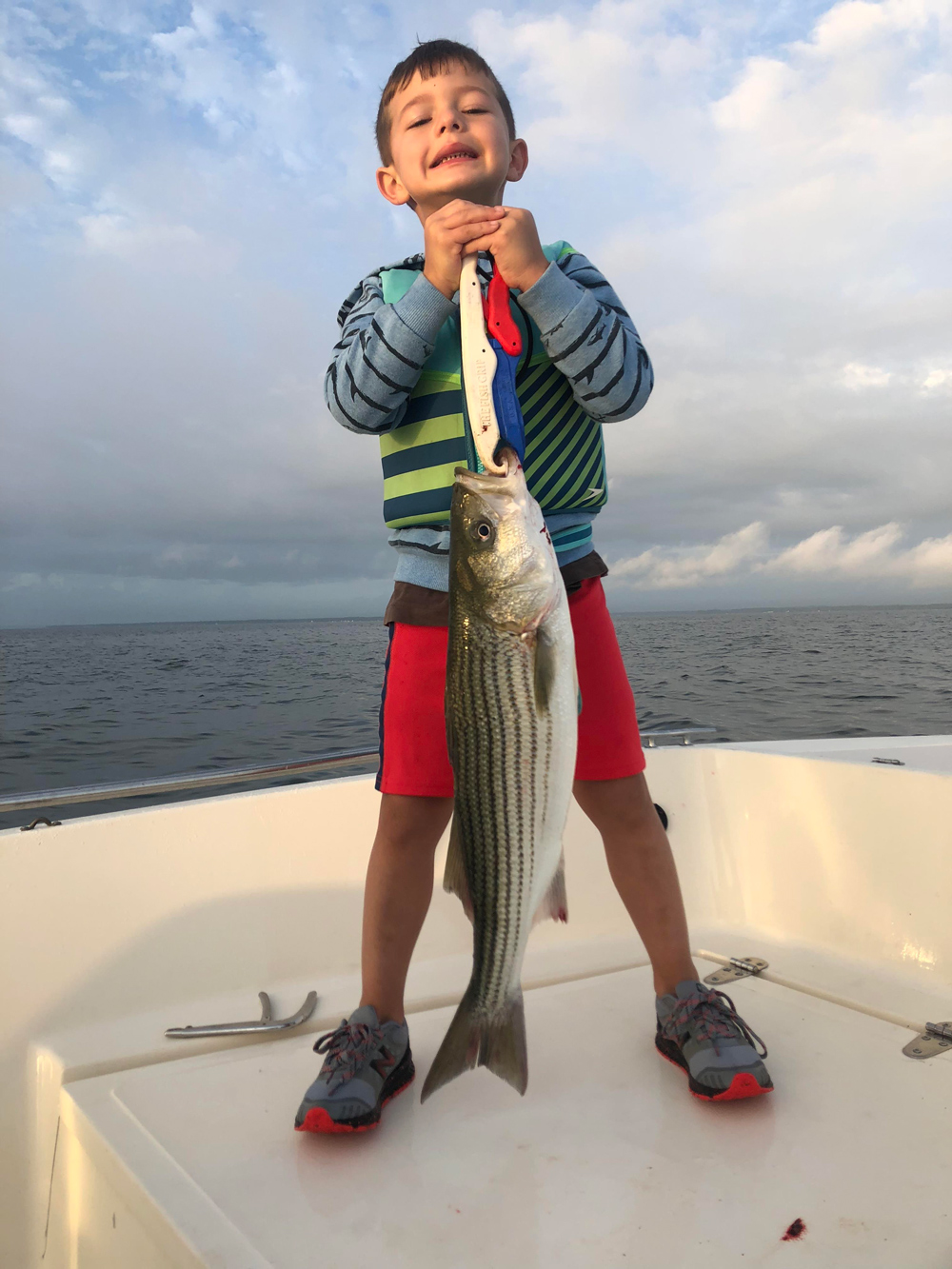
Jigs with five to six inch pink or chartreuse tails are consistently getting smacked for jiggers working where they spot birds, at the Sewer Pipe, and the Bridge pilings. News of decent catches from the mouth of the Patapsco have also been filtering in from readers, with soft plastics reported as effective. Topwater is good in the rivers on points and along rip-rap but mostly during the wee hours of the morning, so set your alarms early to be rewarded with some blow-ups.